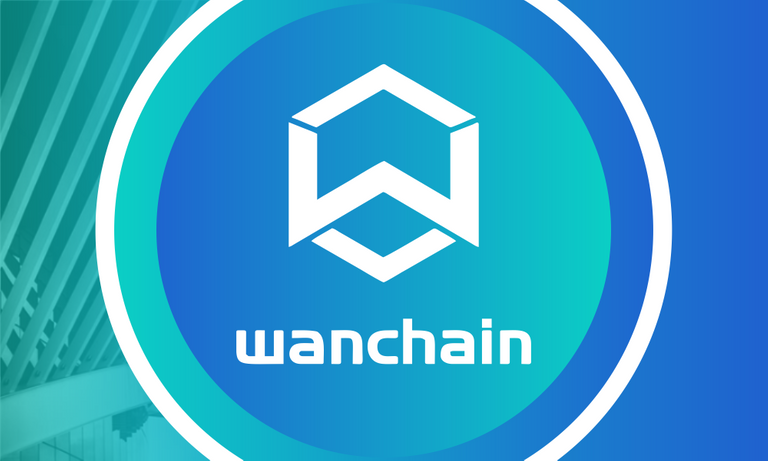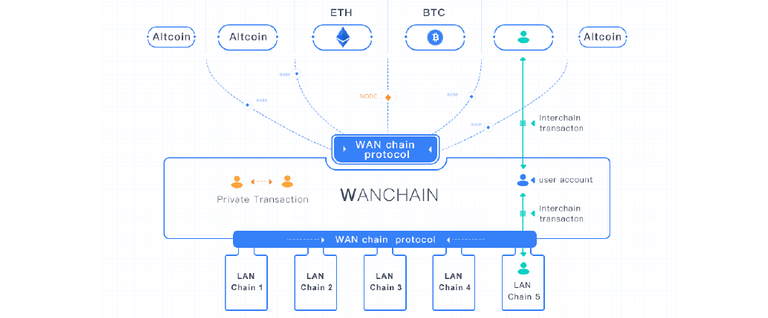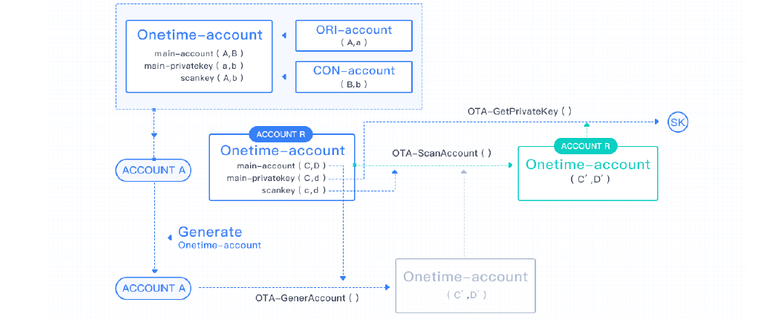Wanchain - User Security Protocols With Wanchain - SECURING INTRA-CHAIN TRANSACTIONS

Wanchain is a cross-blockchain marketplace offering future-level financial services.
After reading the last Wanchain article, I got a lot of feedback messages from readers. While the Wanchain platform promises some revolutionary financial breakthroughs, the recurring question was "How exactly will Wanchain secure my cryptocurrency across different blockchains while remaining completely decentralized?"
That's a good question which I will try to respond to and expatiate on in this article and the next.

As we all know each blockchain is basically a unique island and exists independent of others. It has it's own value but only those on that island(blockchain) can reap the fruits and enjoy its resources(perform operations and transactions). To integrate them, Wanchain is not only connecting but will have to process certain computing hurdles and merge some blockchain code parameters to streamline the compatibility and conversion from one cryptocurrency to another. Normally, this would mean some processes will be left a little unsecured as a compromise for interoperability. However, with Wanchain, there are multiple security protocols to not only safeguard your portfolio but also keep you(the customer) totally anonymous.
Let's look at Wanchain's Architecture

You will notice that Wanchain doesn't just change the code for every different blockchain. Instead it has its own protocols that cryptocurrencies from different blockchain will be compliant to. After running through the Wanchain protocol, they are then assigned unique Identifier Markers as assets and thus integrated into the Wanchain ecosystem.
Now recall that Wanchain supports both Intra-Chain transactions and Cross-Chain transactions.
Inter-Chain transactions mean transactions with the same blockchain. Example Bob sends some ETH from his Ethereum wallet to John's Ethereum wallet.
Cross-Chain transactions are transactions that send value from one blockchain to another. Example Bob wants to pay Kelvin in eth. But Kelvin only accepts BTC payments. Bob sends ETH to Kelvin's Wanchain wallet and Wanchain automatically sends the equivalent value of BTC to Kelvin's BTC wallet. We can see that the value has transferred from Ethereum blockchain to Bitcoin blockchain.
WANCHAIN SECURING INTRA-CHAIN TRANSACTIONS
On normal blockchains, intra-chain transactions are usually protected by "Proof" hash values and the use of a Private Key. This is not always safe. Despite the fact that the blockchain cannot be hacked, humans are prone to error and there have been many instances where people accidentally revealed their private keys.
Wanchain secures Inter-Chain transactions by enforcing anonymity for every transaction. This is achieved using a Ring-Signature Scheme and One-Time Account mechanism.

ONE TIME ACCOUNT SYSTEM
On Wanchain, each user has ONE main account and many sub accounts. To stay anonymous in a transaction, users generate an 'associated account" to create a ONE TIME main account with the original one. Users have the account keys (Eg G,g).
G is the public key
g is the private key
To generate a one-time main account, the user first creates a new sub account (eg H,h), The main account(the new one-time main account) would now become ((G,H),(g,h)) with the
public key - (G,H)
private key - (g,h)
and scan Key will be denoted by (G, h). Creation of the One-Time account (for the receiver) is triggered when a sender makes a network request for the transaction.
Let us look at this example from the Wanchain whitepaper.
The first user (Bob) wants to send some tokens to the second user (Alice). Alice Main account is (A,a) so when the one-time account is generated let us assume it is (B,b).
Bob invokes the function OTA_GenerateAccount( ) with Alice`s main account as a
parameter to generate Alice`s sub-account(A1,S1):

The scan key allows Alice to know the sub-account that was created for her, and she is the only one in possession of the main private key. With the main private key, she alone has access to the Private Key of the One-Time Account. This gives her total control of the sub-account as no one can take ownership of it without the associated scan key or get the private key of her sub-Account without her main private key. This inter-connected security feature guarantees Anonymity and safety of her assets.


RING SIGNATURE SCHEME
The ring signature scheme is a special kind of group signature scheme uniquely modified for the Wanchain network. The normal group signature scheme needs a trusted center and secure center, but this makes the user traceable by the Trust Center.
Wanchain combats this by removing the trusted center altogether. Wanchain uses a Ring Signature scheme based on Elliptic Curve Cryptography (ECC).
GEN: Get the public parameters. The signer generates a public key set including n members from
the world state through the function GeneratePublicKeySet( ) with the public key as a parameter:
publickeyset=GeneratePublicKeySet(P) The signer makes a key image I by invoking GenerateKeyImage( ) with the public key and private key:
I=GenerateKeyImage((P,x)) SIG: Generate the ring signature. The signer generates the ring signature of message m through GenerateRingSignature( ) with publickeyset, I and x:
ringsig=GenerateRingSignature(m,publickeyset,I,x) VER: Verify the ring signature. The signer verifies the ring signature of message m through VerifyRingSignature( ) which returns true or false with publickeyset, I and ringsig:
flag=VerifyRingSignature(m,publickeyset,I,ringsig) If the flag is true, the ring signature is valid. Otherwise it`s invalid.
In the Ring Signature scheme, the key image and ring signature cannot be matched with the signer who is among the publickeyset. Anyone can verify whether the signature is valid or not, but no one is able to identify the signer.
The ring-signature as the name denotes aggregates the signature shares from a generated public keyset and different generated accounts which cannot be connected to the actual signer. This combined with the One-time account makes the sender completely anonymous.

On the next article we will discuss how Wanchain Secures Cross-Chain Transactions.

To learn more about this wonderful project, you can visit the Wanchain website.
You can also read the Wanchain whitepaper | Wanchain Yellow Paper | and Wanchain Commercial Paper for the technical explanations.
The team is always willing to answer questions and you can reach them on any of their social media accounts.
Telegram | Discord | Twitter | Reddit | Facebook | Medium | Weibo | Github

RELATED ARTICLES

DISCLAIMER: The information contained within this post shall not be taken as financial advice. I am not a financial advisor and none of your investing should be carried out based on any information presented here. You can lose all of your money by not investing wisely. The above information is for educational and entertainment purposes only. Kindly Endeavor to DO YOUR OWN RESEARCH.
Image Credits: Island
All other images were derived from the Wanchain website and Wanchain whitepaper.
Shared
Twitter
Facebook
LinkedIn
Instagram
Reddit
Congratulations @ulqu3! You have completed the following achievement on the Steem blockchain and have been rewarded with new badge(s) :
Click on the badge to view your Board of Honor.
If you no longer want to receive notifications, reply to this comment with the word
STOPDo not miss the last post from @steemitboard:
Congratulations @ulqu3! You have completed the following achievement on the Steem blockchain and have been rewarded with new badge(s) :
Click on the badge to view your Board of Honor.
If you no longer want to receive notifications, reply to this comment with the word
STOPDo not miss the last post from @steemitboard:
Do you know about CryptoCurve? They're the front end of WanChain and i'm sure you'd be interested. cryptocurve.io